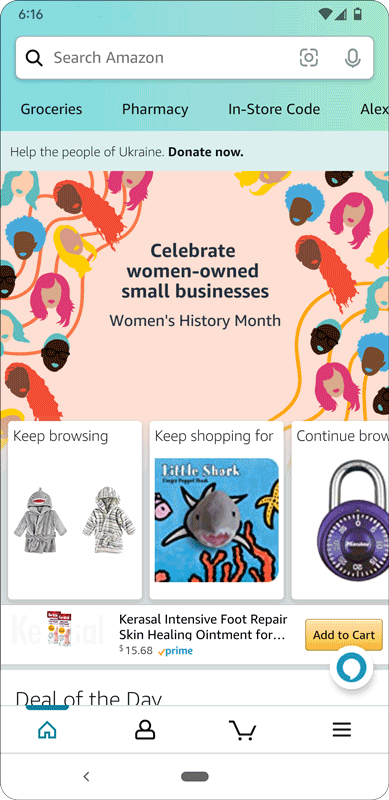Commerce DISPLAY •
Commerce DISPLAY •
Ad Product Development
Challenge
Develop a suite of non-disruptive e-commerce ad solutions that look and feel native to Hearst Magazines digital properties, with the purpose of generating leads and ultimately influencing purchase.
My Role
Handled all UX/UI design
Gathered insights from competitive research
Partnered with the Product Manager to create design iterations for usability testing
Partnered with the Product Manager to gather ad specs and create guidelines
Coordinated with Celtra to automate components within the ad template to reduce production times during the development process
What I accomplished
Applied e-commerce design principles
Developed 2 new ad product offerings
Duration
3 Weeks
Stakeholders
Global Ad Product Managers
Celtra (External Vendor)
Design Process
Observe & Analyze
Identify Challenges
Usability Testing
Ideate
Observe & AnalyzeResearch Goals
Understand the company goals and business objectives related to ad revenue
Gather information about Hearst Magazines consumer purchase influence
Evaluate ad offerings from direct and indirect competitors
Qualitative Research:
Market Research
Competitor Analysis
Setting the SceneMagazines have always been vehicles for shaping popular culture and tools for commerce. In the golden age of magazines, before the influencer, people would rely heavily on editors to identify trends, recommend products and define cultural moments. As access to technology and social media has evolved, so have consumer shopping behaviors. Throughout all of the media clutter, magazines still manage to retain their legacy status as a reliable source of information in the consumer purchase decision-making process.
Spotting Trends
156MM Total Monthly Unique Visitors Across All Hearst Brands
Over 1B in Total Sales
90% of Sales Resulting from Paid Sponsorships and Display Advertising
87.3% Average Growth in Organic Sales YOY Since 2019
Over 28 Million Products Sold Annually Across All Categories
Readers prefer product recommendations over ads
6.17% Average Consumer Purchase Action on Sponsored Content
0.13% Average CTR Across all Display Advertising
3.5min Average Time Spent on Sponsored Content
Competitor Analysis
Condé Nast-
Similarities in content types and design treatments relating to product roundups, galleries and listicles.
Sponsored content is advertised in-house across their portfolio of brands.
-
Lack of custom ad solutions.
Search could be improved by using filters
Meta-
Native ads that take into consideration your recent activity.
Accessible ad network that lends itself to businesses of all sizes.
Minimalist ecommerce design that fits all advertiser categories.
Advanced filtered search results by product category.
-
Low consumer trust due to a lack of product reviews and seller verification.
Amazon-
Product campaigns with an editorial voice that leverage influencers, celebrities, causes and pop culture moments.
Advanced filtered search results by product category, editorial themes and reviews.
Sponsored search results are clearly labeled.
High consumer trust due to an abundance of product reviews, seller verification and “Amazon Choice” products.
-
Overwhelming homepage UI
Identify cHALLENGESDesign considerationsMobile First
On average, 80% of Hearst’ site traffic comes from mobile users.
Low-Lift Solutions
Advertisers purchasing media with Hearst dedicate most of their spend to on-site custom-shot sponsored content. Oftentimes paid display campaigns utilize existing client creative assets and require faster turnaround.
iDEATESolution 1Native Shoppable Gallery
A carousel unit that showcases up to 4 advertiser products in editorially aligned sections across specific sites.
Products load in random order. The product order is auto optimized throughout the lifecycle of the campaign based on CTR.
Solution 2Commerce Video Ad
An interactive video player that allows advertisers to provide additional in-content product information and drives user engagement.
As the video plays each touch point animates to cue user engagement. Users can expand each touch point to reveal the featured products within the video. The touch points can also be time-coded to mirror the products as they are showcased within the video.
Next Steps
As publishers continue to build on ways of creating non-disruptive in-content paid advertising, it would be interesting to develop unique gamified components for each editorial niche that borrow from the traditional print publications. These could be skinned and sponsored for advertisers wanting to drive engagement, build awareness and generate leads.
Other areas of opportunity are cross-promoting sponsored content in-house across the portfolio of brands, and dedicating a branded placement throughout all top touts.






